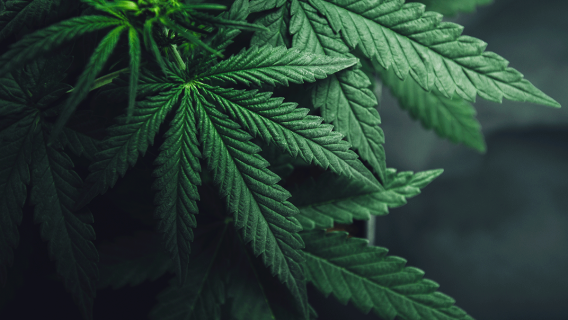After peaking in February 2021, the Advisorshares Pure Cannabis ETF (YOLO) is down 78% from those highs. So, on an absolute basis, it’s fair to say that cannabis stocks have become pretty cheap. In fact, the Global Cannabis Stock Index is down even more than that, currently 82% below February levels.
Plus, given the fact that leading U.S. cannabis companies actually grew 24% during the first quarter of the year, the real markdown is even greater.
But that’s just one way to determine if cannabis stocks are oversold.
The second way to look at valuations is to look at price/earnings ratios, or P/Es. The problem with that is that most cannabis companies don’t have positive earnings yet; they’re still in the investment phase, working to grow big to take advantage of economies of scale. Of the five leading U.S. operators, only two have estimated P/E ratios, and those are 44 and 49, numbers that are not unreasonable for growth companies. Someday, all the top cannabis companies will have earnings—all they need to do is reduce the pace of investment—and when that day comes, this will be a more useful metric.
The third way to look at valuations—and my favorite, right now, for this industry—is to look at price-to-sales ratios, or PSRs, and compare them to the PSRs of similar industries, which in this case means tobacco and alcohol—branded consumer commodities that are heavily regulated and taxed.
PSRs of Sin Stocks
Today, the average PSR of the five leading U.S. cannabis companies is 2.79. By comparison, the average PSR of the five leading global tobacco companies—an industry with terrible growth prospects—is 2.55. These companies include Philip Morris International (PM), which saw no growth in the first quarter from the prior year, British American Tobacco (BTI), which saw revenues shrink 1% in the first quarter from the prior year, and Altria (MO), which saw revenues shrink 2% in the first quarter from the prior year. The fact that the leading cannabis companies are even close, by this measure, means they’re incredibly cheap.
Also useful for comparison are the five leading global alcohol companies. Their average PSR is 4.25, and it’s easy to argue that cannabis valuations should at least be up at that level, if not higher. The leading alcohol companies are Diageo (DEO), which grew revenues 15% in the first quarter, Anheuser-Busch Inbev (BUD), which grew revenues 8% in the first quarter, and Heineken (HEINY), which grew revenues 8% in the first quarter. And all these companies pay a dividend, so they get a valuation premium for that. However, the alcohol industry is at risk of increased regulation intended to address the costs of alcohol abuse and alcohol on society (not exactly like what happened with the tobacco industry, but similar), while the cannabis industry has the mirror image situation; cannabis is almost certain to become more socially acceptable, and more frequently prescribed for medical ailments.
In fact, it’s almost certain that cannabis will eventually become legal across the U.S., just as it is in Canada. The state-by-state legalization trend is clear, as is the will of the people.
But if you’re an investor looking into cannabis stocks, the worst thing you can do is wait to invest in the sector until marijuana is legal, and that’s because major legalization events tend to mark major tops for stocks in the sector.
Cannabis stocks peaked in early 2014 as Colorado began legal sales (two years after voters approved it).
Cannabis stocks peaked in January 2018, as California marijuana stores opened (two years after voters approved it).
And cannabis stocks peaked in October 2018 as legal sales began across Canada (five months after federal lawmakers passed the law).
Now, I have no idea when federal legalization will take effect in the U.S. In fact, it’s likely that federal restrictions against banking in the sector will fall first, perhaps by passage of the SAFE Banking Act. But you don’t need to know when legalization will come. All you need to do is buy now, while stocks in the sector are cheap, and then hold until the sector is widely popular again, just as federal legalization finally takes effect.
But what stocks should you buy? In many cases, when an entire sector is cheap, investors can do well by simply buying an ETF of the sector, thus reducing the risk of buying any one stock. But I don’t recommend that for the cannabis sector, and the reason is this: The number of participants in the cannabis sector is still shrinking, as smaller companies either fail, get delisted, or get acquired by the bigger players. Four years ago, when the cannabis sector was red-hot, I was tracking 167 stocks. Today, that number has shrunk to 98. And the “failures” have been hurting cannabis ETFs.
By contrast, the leading companies in the industry are growing, both organically and by acquisition, and they’re the ones you want to own.
Want to know which cannabis stocks I’m currently recommending? Read the latest issue of my Sector Xpress Cannabis Advisor, where I have a portfolio full of them – and have been beating the marijuana index for years!
Given the relative valuations of these sin stocks, which would you prefer to own right now? Which do you already own? Tell us about it in the comments below.
